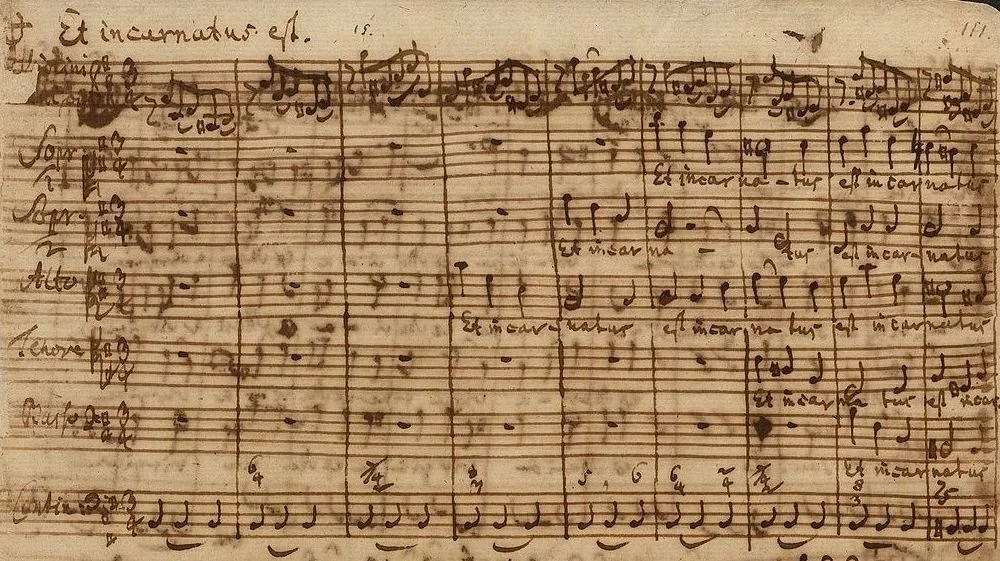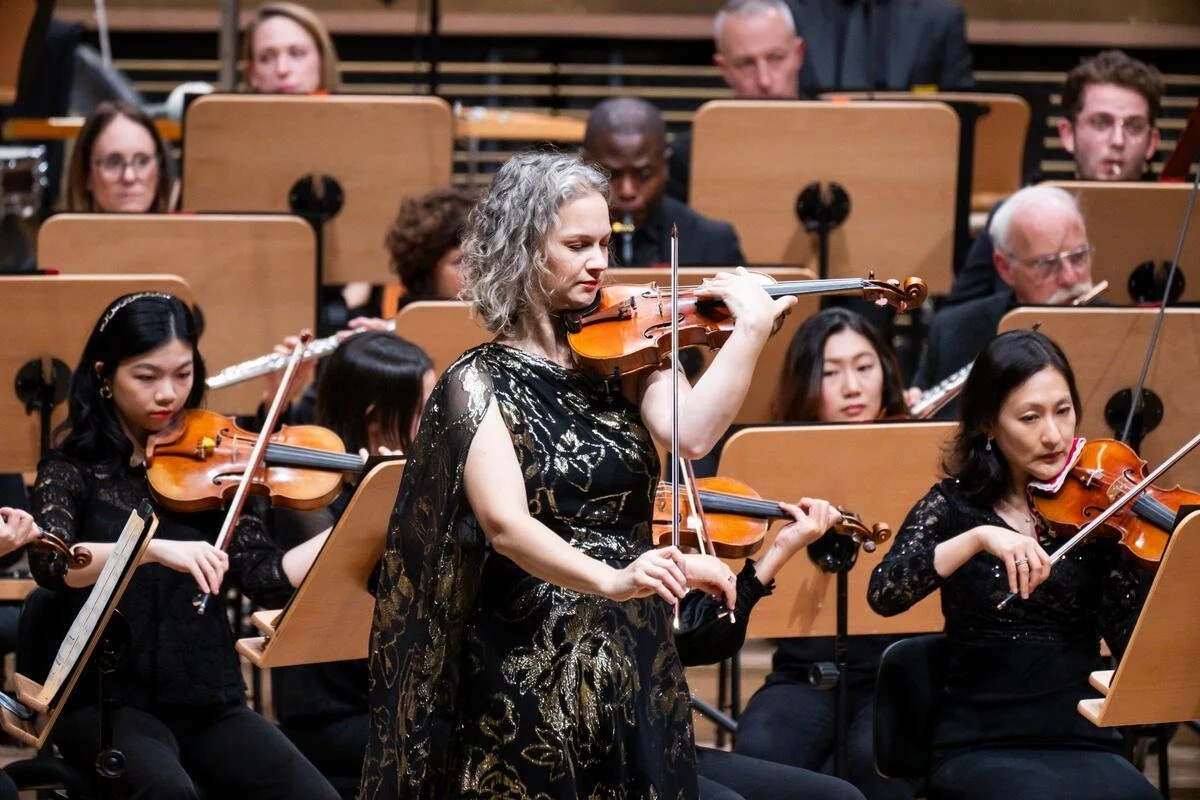REVIEW: New York Philharmonic Polishes Classic Formula
Above: Jaap Van Zweden, Conrad Tao, and New York Philharmonic. Photo by Chris Lee.
March 16, 2024
As Jaap van Zweden’s term as New York Philharmonic’s Music Director enters its home stretch, the combination of a lithe orchestra, energetic conductor, adventurous soloist, and perfectly balanced programming made for the platonic ideal of the symphonic concert.
Overture, concerto, symphony. It’s a formula that works, especially as applied here: a compelling sequence of moods, rhetoric, keys, harmonies — a larger musical structure — to propel forth a narrative. Felix Mendelssohn’s The Hebrides Overture, Op. 26, a brooding tone painting (in F# Minor), followed by the journeying Mozart Piano Concerto No. 17 (in G Major), capped by the hard-earned arrival of C Major in Beethoven’s iconic Fifth Symphony. We travel from murky darkness to triumph — a tritone away.
The lean Fingal’s Cave, as the Mendelssohn is more evocatively known, showcased the Philharmonic’s core as being in tip-top form, operating the renovated hall’s acoustics to musical effect. Refined and elegant — if you closed your eyes, you might have guessed you were hearing the Cleveland Orchestra, if it weren’t for that New York edge, a forward-leaning nerve that midwestern orchestras eschew. This was a restrained, classical stance toward Mendelssohn, rather than a romantic approach, relying upon the orchestration’s tricky elegance to reveal coloristic mystery.
Sinuous noodling between voices became seamlessly woven lines. Oboes melted into violins. Bassoons merged with cellos. Violins became the upper treble of the timpani. Winds and strings coalesced into a single glassine voice, thanks to rhythmic energy and precise intonation. Van Zweden paced the overture breathlessly through gentle, carefully sculpted dynamic shapes. Anthony McGill’s tender tranquillo assai solo, which blossoms into a sweet duet, was exquisite. A significant amount of the piece’s stormy mood was provided by Markus Rhoten’s energized timpani swells.
Conrad Tao at New York Philharmonic. Photo by Chris Lee.
Artur Schnabel wrote, “Children are given Mozart because of the small quantity of the notes; grown-ups avoid Mozart because of the great quality of the notes.” Conrad Tao darts a bullseye in the center, animating Wolfgang Amadeus Mozart’s delightful 1784 concerto with a touch of childlike spontaneity, and the occasional wink of grownup wisdom.
The orchestra’s introduction sparkled with the buoyancy of a period-instrument-orchestra. Tao’s Mozart alternated earnest, delicate lyricism with crisp, ironic whimsy. He knew when to color within the lines, and when to break the rules. In the first movement, as the trilling piano lead the orchestra headfirst into a magical deceptive cadence, there was a split second in which Tao spoke volumes, revealing a deeper source for his first, thrilling cadenza (the pianist’s own), which spun into a veritable Mad Scene from a bel canto opera.
Tao and van Zweden made a convincing case for the second movement, Andante, as the heart of the piece, making stylish choices, and uncovering emotional reflection in the melody. Tao experiments with the simple power of the arpeggio, expressively strumming chords more like a guitar than a harp. In the second movement’s revelatory cadenza, such Schumann-esque gestures develop and transform, manifesting the atonement and apotheosis of a hero’s mythic journey.
The finale, Allegretto, a series of variations based on a theme inspired by Mozart’s caged Starling, was light as air. Tao’s composer-instincts always fuel his playing, intensifying the musical sense of anticipation and release. The spell was kept afloat by Tao’s reverie of an encore, his own transcription of Art Tatum’s recording of “Over the Rainbow,” which for all its jazzy flight of fancy, remains true to Dorothy: the ultimate I Want Song.
Jaap van Zweden and the New York Philharmonic. Photo by Chris Lee.
The musicians who played the Philharmonic’s 1844 inaugural concert, at which Ludwig van Beethoven’s Symphony No. 5 in C Minor, Op. 67 was performed, have long retired from their chairs, yet the orchestra still plays this warhorse as if it were written yesterday.
This was an urgent Beethoven’s Fifth — risky, even. The Allegro con brio’s infamous “fate” motif was not ponderous in the slightest — we were on edge from first breath. But the Philharmonic nailed every encounter with destiny. The driving tempo elevated an arching, singing line. The anthemic second movement, Andante con moto, emphasized florid, long-spun phrases, and achieved a sense of suspension. The woodwinds levitated, the strings soared.
The third movement was impatient and agitated; the celli and basses were crackerjack in the mischievous, creeping first theme, and then made crisp knife-work of the running, fugue-like second theme. Van Zweden gauged the ascent to the heraldic, victorious finale with architectural vision. Finally, the horns won the evening with spectacular, gratifying playing at the mountaintop.
This was a viscerally pressing reading, burnished, and smartly balanced. Van Zweden’s vital approach to the classics, and the improved acoustics of David Geffen Hall, are leaving the Philharmonic in ready-shape for the next chapter.







